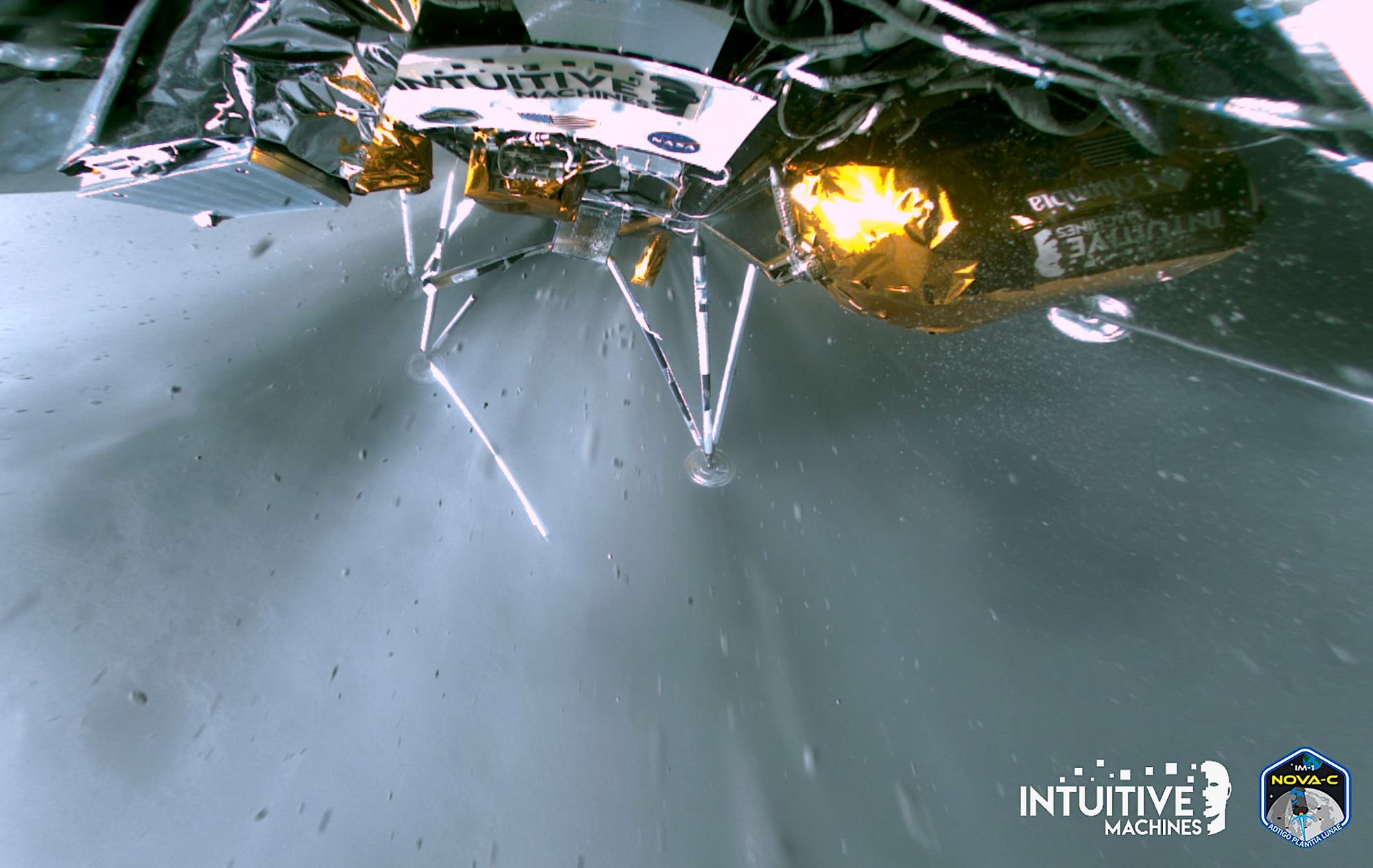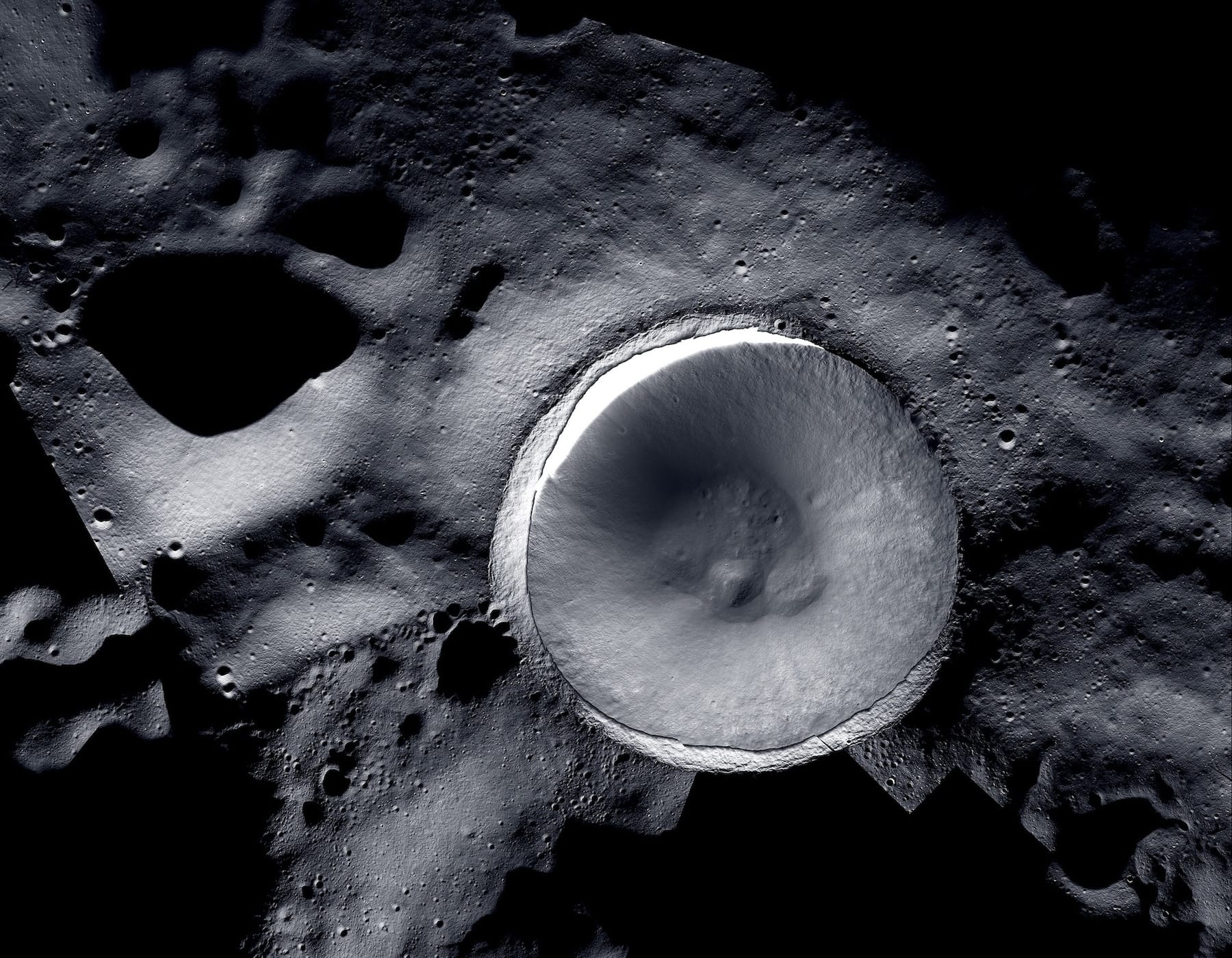Moon Monday #166: An intuitive 98% success, Artemis updates, and more
An FYI before we begin: If you follow me on social media—especially LinkedIn, Twitter, the Fediverse or Bluesky—read this life update from my other blog: Embracing a simple but effective digital life.
An intuitive success criteria?

It turns out more retrospective corrections are needed for the February 22 oblique Moon landing of Intuitive Machines’ Odysseus spacecraft part of NASA’s CLPS program. Previously, the publicly traded company prematurely stated post-landing that Odysseus is “upright”, only to correct it in a media briefing timed to the closing of the stock market an entire day later. Now it turns out even the NASA LiDAR onboard, which Intuitive Machines and NASA were prompt to praise for its last-minute role as a mission savior, actually did not assist Odysseus’ landing in the last 15 kilometers of descent due to a delay in processing its data.
It’s incredible that Odysseus even rough-landed, as it was relying purely on its inertial measurement unit (IMU) and optical navigation data. But it also means the LiDAR didn’t contribute for essentially the entire descent. Are we supposed to believe that descent telemetry on Mission Control screens—which wasn’t shown or visualized on the web stream unlike Chandrayaan 3 or SLIM—never made it clear to the company and NASA that the LiDAR readings weren’t coming through to the lander’s navigation system? Or that it wasn’t clear in the following few days either?
In any case, with the Sun no longer illuminating the panel that was keeping Odysseus alive in its fallen position on the Moon, Intuitive Machines put the spacecraft in sleep mode on February 29. As Jeff Foust has summarized, NASA and Intuitive Machines declared the IM-1 mission an “unqualified success”, one that “met very high level mission objectives to touch down softly on the Moon—softly and safely—and return scientific data.” Is it okay to call a visibly rough landing a soft and safe one?
Unfortunately, this whole narrative reminds me of when ISRO retrospectively called the Chandrayaan 2 mission a “98% success” despite the crashed lander. And so this lunar enthusiast now needs to do some hard reality checks. While yes, as I’ve said in the opaque victory of Odysseus, the IM-1 mission is a success for Intuitive Machines, and Eric Berger has a great overview of the many (previously undisclosed) hurdles the company’s persevering engineers crossed to get to the Moon, I also want to present some questions that not enough seem to be asking.
Firstly, JAXA’s SLIM lander was arguably in a worse situation than Odysseus after it also tipped over on reaching the Moon as it couldn’t even generate power until the Sun circled to the other side. And yet JAXA provided a press update within 2 hours of the landing which sincerely accepted SLIM’s mixed outcomes. In fact, JAXA had explicitly defined and distributed its various success criteria in the pre-launch press kit, which it honored. Can the same things be said for Odysseus? Now, sure, Intuitive Machines doesn’t have an obligation to be as transparent as a tax-funded agency. But so didn’t Astrobotic and ispace, who nevertheless showed greater transparency in their communications despite failure.
In any case, the NASA-funded payloads onboard Odysseus come from US taxpayers, where the communications onus remains. Here, the situation is that most NASA payloads collected or transmitted limited data, and whose specifics weren’t revealed initially. A payload called Stereo Cameras for Lunar Plume-Surface Studies was flown on Odysseus to specifically study the lander’s engine plume effects on lunar soil during the final descent phase. NASA says the payload did not do said imaging. And yet the agency states in the same release that “the bottom line is every NASA instrument has met some level of their objectives.” A subsequent report by Eric Berger reads:
As of Wednesday [February 28], NASA had been able to download about 50MB of data. The baseline for success was a single bit of data.
Was this criteria for success made clear and public pre-launch?
Is collecting only some data acceptable to be qualified as a success? Would the Principal Investigators and scientists hoping for or relying on that data agree with that assessment beyond being thrilled to get to the Moon at all? And if those indeed are the goals—to acquire some data and excuse everything else by citing low costs, et al.—then maybe let’s also call India’s Mangalyaan Mars orbiter a massive scientific success rather than a technological one.
Why is it not enough to celebrate the genuine feats Intuitive Machines did achieve? Being the first to lunar land using cryogenic methalox engines is impressive. So is making it to the Moon alive using only optical navigation and an IMU! But is such partial but also modular success not enough to quench our enthusiasm for lunar exploration? Or do we believe only in binary outcomes now?
Should the fact that the main engine continued firing despite Odysseus having touched the Moon not be deemed a concern as it can damage the lander and its payloads? Yes, IM-1 was certainly a difficult mission to have undertaken. But so was every other Moon mission with various firsts. Space is hard for everyone.
Does a partial success of IM-1 halt the CLPS program? As I’ve already said, it’s quite the opposite! So why retrospectively shift goalposts? And if IM-1 is an “unqualified success” but also a “flight test”, should the “shots on goal” approach of CLPS count IM-1 as a wholly successful mission or a mission at all?
Edit on March 14, 2024: A follow-up on my critique of the IM-1 Moon mission’s narrative
Many thanks to Epsilon3, The Orbital Index and Gordon Roesler for sponsoring this week’s Moon Monday. If you love my work too, join them.
Artemis updates

- NASA has released initial datasets from its ultra-sensitive ShadowCam imager onboard South Korea’s first lunar orbiter KPLO, which formally started studying the Moon from February 2022. ShadowCam’s unique observations of polar permanently shadowed regions are enabling planning of future resource prospecting missions and even crewed missions who will scout for water ice. BTW, there’s a cool web app to directly explore the delicate lunar views from ShadowCam.
- Jeff Foust reports that a NASA safety panel has been studying a design issue with the Orion spacecraft since last year. It concerns the side hatch, which could fail to open in (unspecified) off-nominal situations and thus be a concern for astronaut safety.
- In the meanwhile, SpaceX and NASA said that they conducted more than 200 terrestrial docking tests with full-scale Lunar Starship and Orion docking simulator hardware. The tests demonstrated that Starship should be able to perform a “soft capture” of crew-hosting Orion in lunar orbit for the Artemis III Moon landing mission later this decade. Starship’s docking system is based on Dragon 2, which is flight proven on missions to the International Space Station.
- Relatedly, NASA, ESA, and Nikon are collaborating on a handheld camera for Artemis III astronauts to capture good low light images in the dark environment of the Moon’s south pole with ergonomic ease. The space agencies have been testing prototypes of these devices in ESA’s Pangaea campaign, which trains future lunar astronauts in geology and sample collection, and in NASA’s analog JETT 3 mission in Arizona. The camera will be flown to the International Space Station for testing before using it on Artemis missions.
More Moon

- After the solar-powered SLIM lander reestablished contact with Earth on February 25 followed shortly by JAXA terminating it because of heat concerns, the space agency resumed imaging operations for a brief while. It was a short revival though, as on March 1, the Sun set at its landing site and SLIM was set to sleep again.
- The China Manned Space Agency (CMSA) announced the names of the two spacecraft modules that will carry Chinese astronauts to the Moon by 2030. Chosen from a pool of public proposals by Chinese citizens, the lunar orbital capsule is named “Mengzhou Y”—or “Dream Boat Moon”—and the lander is named “Lanyue”—from Mao’s poem “You can go to the nine heavens to catch the Moon”. China’s plan involves the upcoming Long March 10 rocket launching the ~26,000-kilogram Mengzhou Y with crew to lunar orbit, where it would dock with the similarly massive Lanyue lunar lander, itself launched by another Long March 10. Two astronauts will transfer to the lander for a lunar touchdown, and return to orbit after exploring the Moon for a few days. CMSA says all three of these mission elements are progressing well in their initial development stage.
- The Lunar and Planetary Institute is seeking a Director.
- Sponsored listing: Space author and Moon Monday sponsor Gurbir Singh is offering all his books and audiobooks on space exploration at 50% discount for my readers. Use the coupon JMS50. Not sponsored: I think The Atlas of Space Rocket Launches might interest Moon Monday readers the most!
